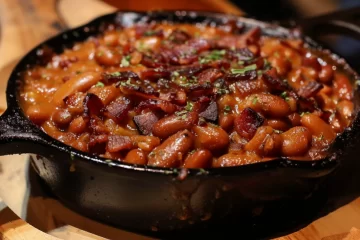Introduction
Cooking quality food when on a budget can seem daunting, especially when trying to balance nutrition, taste, and cost. However, with the right strategies and knowledge, it’s entirely possible to prepare delicious and healthy meals without breaking the bank. Whether you’re feeding a family or just yourself, understanding how to maximize your grocery budget while maintaining high culinary standards is invaluable. In this comprehensive guide, we’ll explore various tips, tricks, and recipes to help you master the art of budget-friendly cooking.
Table of Contents
Understanding Budget-Friendly Cooking
Budget-friendly cooking means making smart choices about what you buy and how you prepare your meals. It involves selecting cost-effective ingredients, utilizing cooking methods that maximize flavor and nutrition, and being mindful of waste. There are common misconceptions that eating on a budget means sacrificing quality or taste, but this is far from the truth. With careful planning and a little creativity, you can enjoy satisfying and nutritious meals.
The Importance of Meal Planning and Smart Shopping
Effective meal planning is one of the keys to cooking quality food on a budget. By planning your meals ahead of time, you can make a detailed shopping list that helps you avoid impulse buys and ensures you only purchase what you need. This not only saves money but also reduces food waste. Additionally, understanding how to shop smart—such as buying in bulk, choosing seasonal produce, and utilizing sales—can significantly stretch your food budget.

Essential Tips for Cooking on a Budget
Planning and Budgeting
Creating a weekly meal plan is the foundation of budget-friendly cooking. Start by setting a realistic food budget based on your income and needs. Here are some steps to get you started:
- Assess Your Budget: Determine how much you can comfortably spend on groceries each week or month.
- Plan Your Meals: Write down your meals for each day, including breakfast, lunch, dinner, and snacks. Focus on recipes that share ingredients to reduce costs.
- Make a Shopping List: Create a detailed shopping list based on your meal plan. Stick to this list to avoid unnecessary purchases.
Smart Shopping Strategies
- Buy in Bulk: Purchasing staples like rice, pasta, beans, and spices in bulk can save you a lot of money. Stores like Costco or bulk sections in grocery stores offer these items at a lower price per unit.
- Choose Seasonal Produce: Fruits and vegetables that are in season are not only fresher but also cheaper. Use resources like seasonal produce guides to know what’s in season.
- Utilize Sales, Discounts, and Coupons: Look for weekly flyers and online coupons. Apps like Ibotta and Honey can help you find the best deals.
- Shop at Discount Stores and Farmers’ Markets: Discount grocery stores often have great deals on quality products. Farmers’ markets are excellent for fresh, local produce, and you can sometimes get discounts if you shop close to closing time.
Reducing Food Waste
- Proper Food Storage Techniques: Store fruits and vegetables properly to extend their shelf life. For example, keep potatoes and onions in a cool, dark place, and store greens in the refrigerator wrapped in a damp cloth.
- Using Leftovers Creatively: Transform leftovers into new meals. For instance, leftover roast chicken can be used for sandwiches, soups, or salads.
- Understanding Expiration Dates: Know the difference between “best by,” “sell by,” and “use by” dates. Many foods are still safe to eat after these dates if stored correctly.
Budget-Friendly Ingredients
Choosing the right ingredients is crucial when cooking quality food on a budget. Opting for versatile and nutritious items used in multiple dishes helps maximize flavor and cost-effectiveness.
Staples to Always Have on Hand
A well-stocked pantry with essential staples ensures you can always whip up a meal without frequent store trips. Here are some must-have items:
- Rice and Pasta: These are affordable, versatile bases for many meals. Whole grain or brown rice and whole wheat pasta are nutritious options.
- Beans and Lentils: Packed with protein and fiber, these legumes are great for soups, stews, salads, and meat substitutes.
- Canned Tomatoes: A base for sauces, soups, and stews. Opt for no-salt-added varieties.
- Oats: Perfect for breakfast and baking, oats are nutritious and filling.
- Flour and Baking Supplies: Essential for homemade bread, pancakes, and baking.
- Spices and Herbs: Basics like salt, pepper, garlic powder, paprika, and dried herbs add flavor to any dish.
- Oil and Vinegar: Olive oil and vinegar are key for cooking and dressing.
Affordable Protein Sources
Protein is essential to a balanced diet, but it can often be one of the more expensive components. Here are some budget-friendly protein sources:
- Eggs: Versatile, nutritious, and affordable. Eggs can be used in various dishes, from breakfast to dinner.
- Chicken: Chicken is a cost-effective protein, especially when bought whole or as thighs and drumsticks.
- Tofu and Tempeh: Excellent vegetarian protein sources that are often cheaper than meat.
- Canned Fish: Tuna and salmon are nutritious options for salads, sandwiches, and casseroles.
- Ground Meat: Ground turkey or beef can be stretched further in dishes like meatballs, tacos, and casseroles.
Versatile Vegetables and Fruits
Fruits and vegetables provide essential vitamins and minerals and are key components of any healthy diet. Here are some versatile and affordable options:
- Carrots are great for snacking, soups, and stews. When stored properly, they have a long shelf life.
- Potatoes: Versatile and filling, potatoes can be used in various dishes, from mashed potatoes to soups and casseroles.
- Frozen Vegetables: These are often cheaper than fresh and just as nutritious. They are convenient and reduce waste.
- Bananas: Affordable and packed with nutrients, bananas are great for snacks and baking.
- Apples: Available year-round and can be used in both sweet and savory dishes.

Affordable and Nutritious Recipes
Cooking delicious meals on a budget doesn’t mean compromising on taste or nutrition. Here are some affordable and nutritious recipes to try.
Quick and Easy Budget-Friendly Breakfast Ideas
- Overnight Oats: Mix oats with milk or yogurt and your favorite toppings, such as fruits, nuts, or honey. Let it sit in the fridge overnight for a quick and nutritious breakfast.
- Vegetable Frittata: Use leftover vegetables and eggs to make a filling and protein-packed breakfast. Frittatas can be made in advance and eaten throughout the week.
- Banana Pancakes: Mash ripe bananas and mix them with eggs and a bit of flour to make simple, healthy pancakes.
Filling and Nutritious Lunch Options
- Lentil Soup: Cook lentils with carrots, celery, onions, and canned tomatoes for a hearty and nutritious soup. Add spices like cumin and paprika for extra flavor.
- Chicken and Veggie Stir-Fry: Use affordable cuts of chicken and a mix of fresh or frozen vegetables. Serve over rice or noodles for a balanced meal.
- Bean and Cheese Quesadillas: Fill whole wheat tortillas with canned beans and shredded cheese. Cook until crispy and serve with salsa and avocado.
Delicious and Cost-Effective Dinner Recipes
- Spaghetti with Homemade Tomato Sauce: Make a simple sauce using canned tomatoes, garlic, onions, and dried herbs. Serve over whole wheat spaghetti with a side salad.
- Vegetable Curry: Use affordable vegetables like potatoes, carrots, and peas. Simmer in a sauce made from coconut milk and curry spices. Serve with rice.
- Baked Chicken Thighs: Season chicken thighs with your favorite spices and bake until crispy. Serve with roasted vegetables or a simple salad.
Snacks and Desserts that Won’t Break the Bank
- popcorn kernels: A cheap and healthy snack. Pop kernels on the stove or in an air popper and season with your favorite spices.
- yogurt parfait: Layer yogurt with fresh or frozen fruit and a sprinkle of granola.
- Homemade Applesauce: Cook apples with a bit of water and cinnamon until soft. Blend until smooth for a healthy and delicious dessert.
Cooking Techniques to Maximize Flavor and Nutrition
When cooking on a budget, it’s important to use techniques that enhance your meals’ flavor and nutritional value. These methods can help you make the most of inexpensive ingredients and turn simple dishes into something special.
Cooking Methods
- Slow Cooking and Pressure Cooking: These methods are great for making the most of cheaper cuts of meat and beans, which can be tough if cooked quickly. Slow cookers and pressure cookers break down fibers, making them tender and flavorful. For example, a slow-cooked beef stew can turn an inexpensive cut into a melt-in-your-mouth meal. Pressure cookers, like the Instant Pot, can cook meals in a fraction of the time, which is perfect for busy families.
- One-Pot Meals: Cooking everything in one pot saves time and makes cleanup easier. One-pot meals often include a mix of proteins, vegetables, and grains, making them balanced and nutritious. Examples include chili, risotto, and casseroles.
- Batch Cooking and Freezing: Preparing large quantities of food at once and freezing portions for later use can save both time and money. Dishes like soups, stews, and lasagnas freeze well and can be reheated for quick, convenient meals. This method also helps reduce food waste.
Flavor Enhancers
- Using Herbs and Spices: Fresh and dried herbs and spices are inexpensive ways to add flavor without extra calories or sodium. Basic spices like cumin, paprika, garlic powder, and oregano can transform a dish. Fresh herbs like parsley, cilantro, and basil add brightness and complexity. Growing your own herbs at home is a cost-effective way to ensure you always have fresh herbs on hand.
- Making Homemade Broths and Sauces: Homemade broths and sauces are more flavorful and healthier than store-bought versions. Save vegetable scraps and chicken bones to make your own broth. Simple sauces like tomato sauce, pesto, and vinaigrettes can be made from scratch and stored for future use. This not only saves money but also allows you to control the ingredients and avoid additives.
- Utilizing Marinades and Dressings: Marinades tenderize and flavor meats, while dressings can enhance salads and grain bowls. Simple marinades can be made with oil, vinegar, and spices. For example, a basic marinade of olive oil, lemon juice, garlic, and herbs can make chicken or tofu incredibly flavorful. Homemade dressings like lemon-tahini or balsamic vinaigrette are easy to make and much cheaper than bottled versions.

Meal Prep and Planning
Effective meal prep and planning are essential for cooking quality food on a budget. They help you save time, reduce stress, and ensure that you always have nutritious meals ready to go.
Weekly Meal Prep Tips
- Set Aside Time for Meal Prep: Dedicate a few hours each week to meal prep. Sunday afternoons are a popular choice, but find a time that works best for you. Use this time to wash and chop vegetables, cook grains, and prepare proteins. Portion out snacks and meals into containers so they’re ready to grab and go.
- Portioning and Storing Meals for the Week: Invest in a good set of reusable containers. Label each container with the contents and date to keep track of what needs to be eaten first. Storing meals in clear containers helps you see what you have, reducing the temptation to order takeout. Freezing some meals can also be a lifesaver for busy days.
- Time-Saving Kitchen Gadgets: Tools like Crock Pot, Pressure Cooker, and Food Processor can significantly reduce prep and cooking time. A good set of Knife for Slicing and a sturdy Cutting Board also make meal prep more efficient. An Immersion Blender can quickly purée soups and sauces without the need to transfer hot liquids to a Blender.
Sample Meal Plans
To help you get started, here is an example of a weekly budget-friendly meal plan:
Monday
- Breakfast: Overnight oats with banana and cinnamon.
- Lunch: Lentil soup with whole grain bread.
- Dinner: Chicken and vegetable stir-fry with brown rice.
Tuesday
- Breakfast: Vegetable frittata.
- Lunch: Bean and cheese quesadilla with salsa and avocado.
- Dinner: Spaghetti with homemade tomato sauce and a side salad.
Wednesday
- Breakfast: Smoothie with frozen berries, spinach, and yogurt.
- Lunch: Chicken and vegetable stir-fry (leftovers).
- Dinner: Vegetable curry with rice.
Thursday
- Breakfast: Banana pancakes.
- Lunch: Spaghetti with tomato sauce (leftovers).
- Dinner: Baked chicken thighs with roasted vegetables.
Friday
- Breakfast: Fruit and yogurt parfait.
- Lunch: Lentil soup (leftovers).
- Dinner: DIY taco bar with ground turkey, beans, and various toppings.
Saturday
- Breakfast: Popcorn and fruit.
- Lunch: Chicken and veggie wraps.
- Dinner: Homemade pizza with whole wheat pita and assorted toppings.
Sunday
- Breakfast: Oatmeal with apples and nuts.
- Lunch: Vegetable and hummus plate.
- Dinner: Batch-cooked lasagna (portion and freeze leftovers).
Grocery List for Sample Meal Plan:
- Whole grain bread
- Brown rice
- Whole wheat spaghetti
- Oats
- Eggs
- Chicken breasts and thighs
- Ground turkey
- Assorted vegetables (carrots, bell peppers, spinach, etc.)
- Canned beans (lentils, black beans, chickpeas)
- Canned tomatoes
- Frozen berries
- Bananas, apples, and other seasonal fruits
- Greek yogurt
- Cheese (shredded and for quesadillas)
- Tortillas
- Herbs and spices (cumin, paprika, garlic powder, etc.)

Frequently Asked Questions
Cooking quality food on a budget raises many questions, especially when balancing nutrition, cost, and convenience. Here are answers to some of the most common questions to help you navigate this journey.
How Can I Make Sure My Meals Are Nutritious on a Tight Budget?
Ensuring that your meals are nutritious while sticking to a budget is possible with a few strategic choices:
- Focus on Whole Foods: Whole foods such as fruits, vegetables, whole grains, lean proteins, and legumes are typically less expensive and more nutritious than processed foods.
- Prioritize Protein and Fiber: These nutrients help keep you full and satisfied. Affordable sources include beans, lentils, eggs, tofu, and canned fish.
- Buy in Bulk: Items like rice, pasta, oats, and beans are cheaper when bought in bulk and can be stored for a long time.
- Seasonal Shopping: Choose fruits and vegetables that are in season, as they are fresher and often less expensive.
- Limit Junk Food: Reduce purchases of snack foods and sugary beverages. Not only do these add to your grocery bill, but they also provide little nutritional value.
What Are Some Budget-Friendly Substitutes for Expensive Ingredients?
Swapping out expensive ingredients for more affordable alternatives can save money without compromising flavor:
- Quinoa vs. Brown Rice: Use brown rice instead of quinoa. It’s cheaper and still provides fiber and nutrients.
- Chicken Breast vs. Thighs: Chicken thighs are usually less expensive than breasts and remain moist and flavorful when cooked.
- Fresh Herbs vs. Dried Herbs: While fresh herbs can be costly, dried herbs are more affordable and have a longer shelf life.
- Fresh Salmon vs. Canned Salmon: Canned salmon is a budget-friendly option that provides the same nutritional benefits as fresh salmon.
- Greek Yogurt vs. Regular Yogurt: Regular yogurt can be used in place of Greek yogurt in many recipes. Strain it yourself to achieve a thicker consistency if needed.
How Do I Stay Motivated to Cook at Home Instead of Eating Out?
Cooking at home can be rewarding, but it’s easy to fall into the habit of eating out. Here are some tips to stay motivated:
- Plan Enjoyable Meals: Include your favorite dishes in your meal plan. If you look forward to your meals, you’re more likely to cook at home.
- Prep in Advance: Spend some time on weekends preparing ingredients or meals. Having ready-to-eat options reduces the temptation to order takeout.
- Create a Comfortable Cooking Environment: Keep your kitchen clean and organized. Play music or listen to a podcast while you cook to make the experience enjoyable.
- Get the Family Involved: Make cooking a family activity. Kids can help with simple tasks, and it can become a fun bonding experience.
- Track Your Savings: Calculate how much you save by cooking at home. Seeing the financial benefits can be a great motivator.

Conclusion
Cooking quality food on a budget is not only achievable but can also be enjoyable and highly rewarding. By planning ahead, shopping smart, and using creative cooking techniques, you can prepare delicious, nutritious meals that don’t strain your finances.
Recap of the Benefits of Cooking Quality Food When on a Budget
- Cost Savings: Preparing meals at home is generally much cheaper than eating out or buying pre-packaged foods.
- Improved Nutrition: Home-cooked meals are typically healthier and more balanced, providing better nutrition for you and your family.
- Enhanced Flavor: Cooking at home allows you to control the ingredients and flavors, leading to tastier and more satisfying meals.
- Reduced Waste: Planning and using leftovers creatively helps minimize food waste, which is good for your wallet and the environment.
Encouragement to Try Out the Tips and Recipes Provided
We hope this guide has provided you with useful strategies and inspiration for cooking quality food on a budget. Don’t be afraid to experiment with new recipes and adapt them to suit your taste and budget. Cooking at home can be a fun and fulfilling activity that brings your family together.
Call to Action: Share Your Own Budget-Friendly Cooking Tips and Recipes
We’d love to hear from you! In the comments, share your favorite budget-friendly cooking tips and recipes. Let’s build a community where we can learn from each other and enjoy the benefits of delicious, affordable home-cooked meals.
Additional Resources
If you’re looking for more tips and inspiration, here are some additional resources that can help you cook quality food on a budget:
- Budget Bytes: A blog that offers simple and affordable recipes.
- Meal Prep on Fleek: Great for meal prep ideas and tips.
- The Frugal Chef: Offers recipes and cooking tips for those on a tight budget.
- Eat Well on Four Dollars a Day: This free cookbook offers a variety of budget-friendly recipes.
Thank You
Thank you for reading this comprehensive guide on cooking quality food when on a budget. We hope it inspires you to explore the culinary world without overspending and to enjoy all the wonderful benefits that come with home-cooked meals.
Kitchen Gear and Equipment We Use and Love
I just wanted to let you know that some of the links on this page are affiliate links. This means that if you click on these links and make a purchase, I may earn a small commission at no extra cost to you. Rest assured, I only recommend products and services that I personally use and love. Your support through these links helps me continue to create valuable content and keep this blog running. I appreciate your support!
















